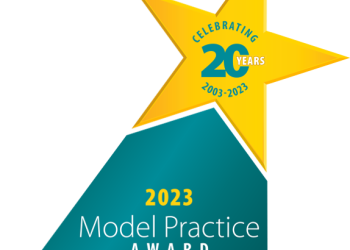
By George T. Roberts, Jr., MHA, FACHE, NACCHO President and Chief Executive Officer of the Northeast Texas Public Health District
Melissa C. Lyon, MPH, leads Pennsylvania’s Erie County Department of Health as Public Health Director. While earning her Master’s in Public Health, Ms. Lyon worked as a site manager for Great Lakes Medical Research, a clinical research site located in Westfield, NY. She spent nine years at Chautauqua County Health Department in New York working in various public health positions including, environmental health and inspections, health promotion and education, public health emergency preparedness, and community collaboration and coalition building.
Below, she discusses the current goals for her health department, highlights important factors to consider when partnering with other organizations, and shares her hope for public health leadership in Erie County.
As the director at the Erie County Department of Health, what are your current goals for the organization?
The current goals that we’re setting here—and I’ve been spearheading in particular—are to change our infrastructure and our ability to create a Public Health 3.0 model so that we’re better aligned and designed to deliver, what I call, ‘21st century public health services’. We need to be better positioned to address all of the upstream social determinants of health that we know are driving our health outcomes.
For the past six years, we’ve been taking a hard look at the barriers that are preventing us from being either responsive or innovative in that space, and it really comes down to the fact that we’re functioning with an old infrastructure that was really adequate in the ’80s, ’90s, and maybe even the early 2000s. But now that we’re in 2020, this infrastructure isn’t serving us in that same capacity; we need to be taking a harder look at financial stability and diversity, discovering new ways to use real-time data or big data, and developing position papers or taking advocacy positions around certain issues. It is time that we pull together our ‘siloed divisions’ into a more cross-trained and multidivisional approach to provide public health services.
The big goal is to have those five pillars (enhanced leadership and workforce, accreditation, technology, data and metrics, flexible funding and key partnerships), of Public Health 3.0 intentionally integrated into our structure. We will be doing that through this next strategic planning process, which we’re launching in 2020. We recently submitted our re-accreditation documentation, so that’s perfect timing for the launch of our new strategic plan.
When you’re thinking about collaborating or partnering with another organization, what sort of factors do you look for, and what factors are deal breakers for you?
I really liked this question when I first saw it, because I thought to myself, ‘Really, are there any deal breakers out there?’ So, I’m going to answer this question almost in reverse: ‘Are there partners out there that would have qualities that I would consider deal breakers?’ I had a really hard time finding any qualities that a potential partner would bring to the table that would be a deal breaker. Therefore, I’m going to say that every variety of agency, entity, organization, association or even neighborhood group has great potential to be a partner that we hadn’t considered in the past to help take our work to a deeper or new level.
Some of the areas where I know we need to push our comfort level a little bit is in this space around economic development. My community often talks about economic development, but they talk about it from a position of jobs, buildings, bricks and mortar and concrete improvements. They rarely talk about it from a human capital investment perspective. So, I am very interested in how we engage those partners to come to the table or for us go to their table and start looking at problems and opportunities through a health lens. This is just one example of where we would choose to seek out a nontraditional partner.
For example, municipalities’ planning departments and code enforcement offices, are areas where we have worked collaboratively on regulatory issues. However, we could work with them in more meaningful ways for future planning and designing of our communities to better support healthy environments, or ways that we can ensure that those that are living in particular neighborhoods have the most equitable access to being healthy.
Often, we can easily identify the gaps in our partnerships better than trying to figure out who our deal breakers are. I don’t think there are any deal breakers. We are looking at gaps and finding new ways to reach out to potential partners. We are definitely pushing our comfort level.
Recently, I have been exploring my role in the economic development space. I’m really pushing myself beyond my traditional public health comfort zone and starting conversations with chamber of commerce members and economic development leaders. It is a very new area for me to be exploring and I am slowly finding my place in the discussions.
What is the most important thing you consider when you’re hiring someone new to your department, and how do you keep your employees motivated to carry out the organization’s mission?
Yet another great question. We have our traditional mission, vision, and motto. But we also have an informal, internal tagline that we reference among the leadership team and staff. We say that “we have a passion for compassion.”
It’s very interesting that in the health department world, we will often attract people and retain employees who have this real, compassionate side to them, and they’re passionate about making a difference.
So, when I’m looking to hire someone, I ask myself, where is their passion? Where do they get excited when they’re talking about a particular question that I’ve asked them? So, when you start to see passion come out in someone during an interview, they become an automatic hire because we can teach them public health skills, program expectations and regulatory requirements but you can’t teach someone passion. When I see passion, that makes me excited.
The other piece I would like to add, that we have recently changed because of our public health reaccreditation, is that we’re looking at ways to diversify our staffing. So, we’re now looking to recruit in new ways to have a more diverse staff. If we are more diverse, then we’re able to better serve our community. We have some different interviewing questions that gauge how sensitive the potential candidates are around issues of cultural competency or health equity. Now, that doesn’t mean that we would disqualify them for hire based on their answer, but we will have a better baseline understanding of the employee’s knowledge or experience with certain issues that might focus more on health equity or cultural competency for the populations that we serve. We are really excited about the unique work we are doing with staff diversity.
To answer your question about how we keep everyone motivated around our mission, it’s always interesting to watch. I call it the “morale barometer” and measure how morale goes up and down during certain times or events. Budget seasons seem to be a cyclical low morale point, because no one is ever sure what will happen during budget season. Public health has, over the past 20 years, experienced dramatic cuts in budgets and that has created fear.
One of the activities that I use to counter low morale is to host monthly staff meetings. I call them “mandatory monthly staff meetings,” but I really try to make the meetings fun. We do activities where employees get to meet other colleagues and co-workers that they might not work closely with day-to-day. We discuss a variety of topics such as individual program achievements, accreditation, employee announcements and awards, external agency presentations, etc. We really work hard to keep that mission and our passion for compassion relevant every month.
I also put myself in the “hot seat” at every monthly staff meeting. Near the end of every meeting, I say, ‘Okay. This is where you get to ask me any question you’ve had a burning desire to know the answer to, and I will do my best to answer it for you’ to create trust and transparency with the staff.
It can be hard sometimes to keep employees motivated all the time, but once a month, it really helps us to get together and say, ‘Yes, this is why we do what we do.’
Earlier this year, you led a panel discussion about the future of public health in Erie County. What do you hope for the future of public health leadership in the county?
Historically, as public health departments, we have been exceptional managers of public health programs and initiatives. But I don’t know that we’ve been in a position to be in the epicenter of decision-making for the community’s future.
Under my current leadership, and what I’m asking more of my division directors is how can we as a health department become a more relevant agency or entity for the county as they’re making decisions? So how do we bring this additional value into the community?
I’ve been using this phrase lately when I am trying to develop a new community partner or I want to be part of a movement that’s happening in the community where we don’t have a presence, I’ve been saying things like, ‘Hey, why don’t you give the health department a chance? We might have more resources or be more valuable than we appear at first glance.’ So, I’d like to say that I’m asking my leadership team and myself to push a little more and be part of the decision-making, or lend some additional information or data as decision-making is happening.
In my panel discussion, I said we needed to start having courageous conversations in spaces where we may not be comfortable. They’re conversations where you say, ‘Huh. I’m not sure where this conversation might go, but I know it’s important that I attempt to start this conversation here today,’ and that is what I’m hoping for. I am really hoping that public health and community health becomes a main pillar of my community’s decision-making because we know the decisions we make today will impact our health tomorrow and long into the future.
To share your story of transformational leadership or to recommend a leader to be highlighted, please contact Taylarr Lopez, NACCHO Communications Specialist, at [email protected].









